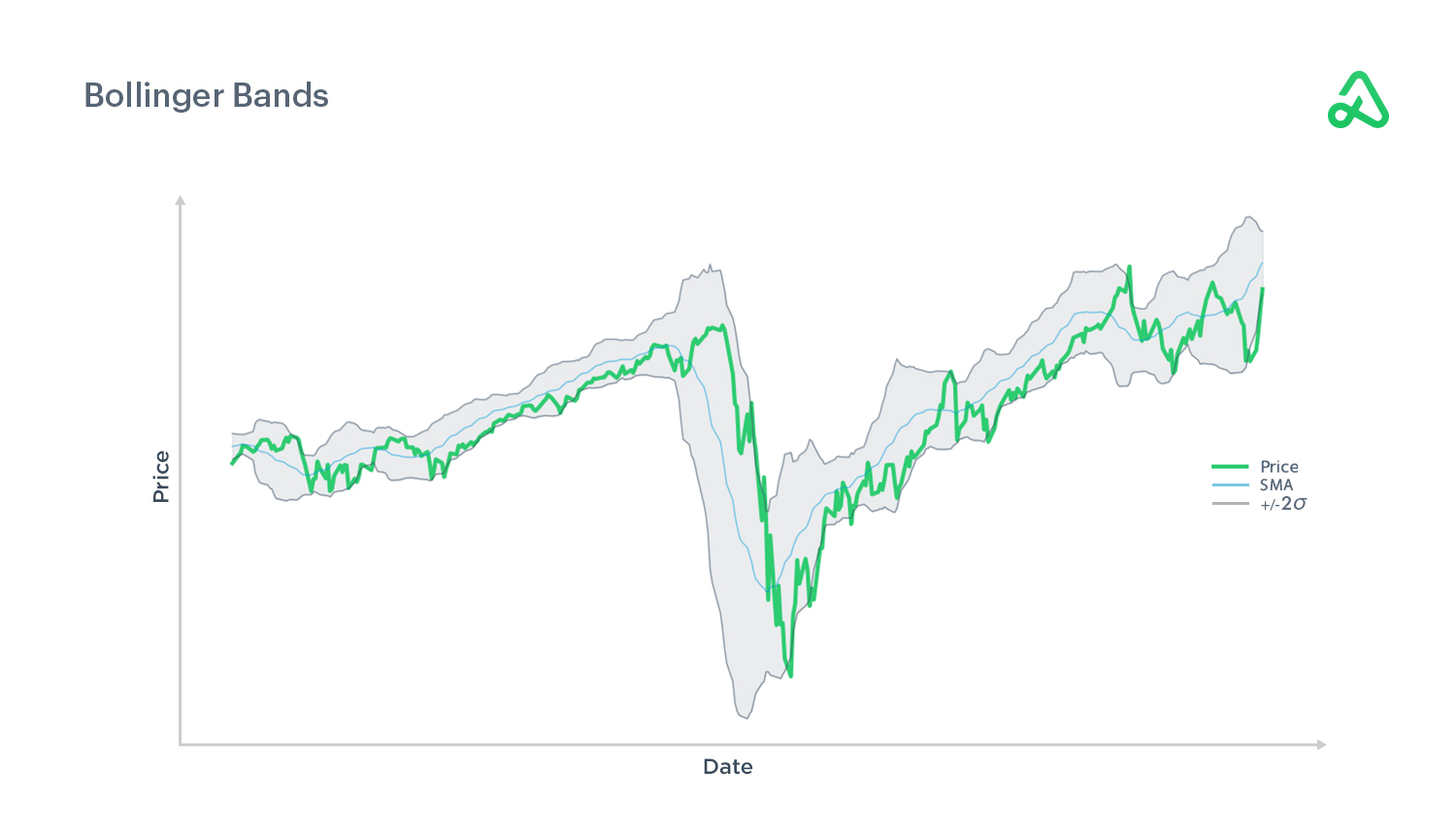Bollinger Bands are a volatility indicator created by John Bollinger. Bollinger Bands consist of a simple moving average (SMA) and two bands above and below the SMA. Typically, the centerline is a 20-day moving average and the bands are two standard deviations.
The bands are dynamic and display changes in volatility. They widen when price volatility is increasing and contract when volatility decreases, allowing traders to quickly identify periods of high and low volatility.

Bollinger Bands provide a relative definition of high and low prices for a given ticker symbol. By definition, prices are considered high at the upper band and low at the lower band. Traders can use this information to determine whether prices are relatively high or low in comparison to past price action.
If the bands are drawn two standard deviations above and below the center simple moving average, approximately 95% of the security’s price action should occur within the bands.

Price moving above the upper band or below the lower band is often used as trading signal. Price tends to oscillate within the bands, so the upper and lower bands can be used as resistance and support or as a breakout signal.
When combined with other technical indicators, such as MACD and RSI, Bollinger Bands can help identify overbought/oversold conditions, trend reversals, continuation, and more.
How to Use Bollinger Bands
Bollinger bands are used to measure volatility and define potential price channels or trends. When prices move outside the bands, it can indicate that a new trend is beginning or that prices have become overextended.
There are many Bollinger Bands strategies and traders use the indicator several ways. Mean reversion traders may buy the security when its price touches the lower band and sell when price hits the upper band. Conversely, momentum traders could use the bands as a signal that price will continue and buy near the upper band or sell near the lower band.
Calculating Bollinger Bands
Bollinger Bands consist of three lines. The middle line is a simple moving average (SMA) and the upper and lower lines are ‘n’ standard deviations above and below the SMA, respectively. Calculating Bollinger Bands is fairly straightforward:
- Calculate a simple moving average of the asset’s price over a specific time period.
- Calculate standard deviation over the same time period.
- Draw lines 'n' standard deviation above and below the SMA to get the upper and lower bands.







